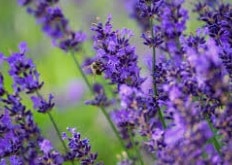 Lavender , also called lavandula , is a genus of plants. It is formed by lipped plants : that is, they have a corolla divided into two lips or sectors, in addition to a persistent calyx and opposite leaves.
Lavender , also called lavandula , is a genus of plants. It is formed by lipped plants : that is, they have a corolla divided into two lips or sectors, in addition to a persistent calyx and opposite leaves.
Cantueso and lavender are lavenders. The geographical distribution of these species is wide, and has even expanded due to the action of man since they are widely used plants.
Lavender is often used to make aromatic products : its essence is valued worldwide. Plants, on the other hand, are used for ornamental purposes.
Perfumes , soaps, ointments and other items are produced from lavender essential oil . The amount obtained from each specimen varies according to the species, the time of year and even the type of distillation used.
The essential oil of lavender, or Lavandula angustifolia , is attributed disinfectant, relaxing, antiparasitic and healing qualities, for example. It is said that the oil of this lavender helps combat headaches, insomnia, sore throat and colds.
Similar properties are attributed to Lavandula latifolia . According to traditional medicine, its essential oil is antiseptic and antibacterial, which is why it is used to treat bites, burns and wounds . Infusions with dried flowers of Lavandula stoechas or cantaueso, meanwhile, would be antipyretic according to this medicinal branch.
It should be noted that lavender is also called the bluish color that resembles the tone exhibited by lavender flowers . This is a light purple , popular in clothing and coverings.
Already in the time of the Old Roman Empire, people used lavender (whose scientific name is Lavanda officinalis ) for therapeutic purposes; in those times, as a complement to relaxing baths, among other things, and today, with a special focus on the treatment of mental and physical stress.
Lavender is usually found in bushes near rosemary and thyme plants, among others, and is immediately differentiated by its particular color and fragrance. To make the most of its properties, it is recommended to collect it during the first hours of the day. To harvest at home, the key month is July, the time of year when flowering begins.
To take advantage of its benefits in the field of home medicine, it is possible to prepare lavender drops or tea, and its application can be external or internal. The external use of lavender focuses on washes that serve to eliminate bacteria such as candidiasis, trichomoniasis and infections in the vagina. It also promotes the strengthening of hair in treatments against hair loss and combats pain in various parts of the body, such as the neck, back, feet and head.
 Drinking lavender in the form of tea can help us improve digestion, relieve emotional problems such as insomnia, anxiety and stress, combat hypertension and improve the general functioning of the nervous system.
Drinking lavender in the form of tea can help us improve digestion, relieve emotional problems such as insomnia, anxiety and stress, combat hypertension and improve the general functioning of the nervous system.
All these benefits that lavender offers us in the search for a healthy and balanced life are possible thanks to its properties, which are described below:
* antiseptic : that is why it serves to prevent infections and reduce bleeding from wounds when applied in the form of drops directly to the affected area;
* anti-inflammatory : helps us overcome injuries such as sprains, so common in athletes;
* relaxing : as mentioned above, it reduces insomnia, anxiety and stress ;
* antioxidants : improve your digestion;
* antiviral and antibacterial : for inflammations such as laryngitis or pharyngitis, among others, and for diseases such as bronchitis, flu and colds, its action is very effective.
